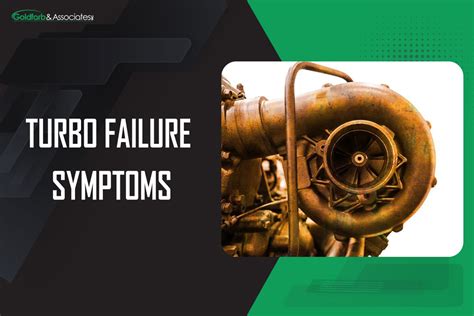Turbo Failure Prevention: Know the Warning Signs
Turbochargers are marvels of engineering, boosting engine power and efficiency. However, these high-speed components are susceptible to failure if not properly maintained and monitored. Understanding the warning signs of impending turbo failure can save you significant repair costs and prevent costly downtime. This comprehensive guide will detail common warning signs, explore preventative maintenance strategies, and answer frequently asked questions about turbocharger health.
What Causes Turbo Failure?
Before diving into the warning signs, it's crucial to understand the root causes of turbo failure. These high-pressure, high-temperature components are vulnerable to several issues:
- Lack of lubrication: Insufficient oil supply or poor oil quality leads to friction and overheating, damaging bearings and seals.
- Oil contamination: Dirt, debris, or excessive carbon buildup in the oil can clog oil passages and restrict lubrication.
- Ingested foreign objects: Debris entering the intake system can strike the turbocharger's impeller, causing damage.
- Over-revving: Excessively high engine speeds can push the turbocharger beyond its operational limits, leading to component failure.
- Heat soak: Prolonged idling or aggressive driving can cause excessive heat buildup within the turbocharger, degrading internal components.
- Improper installation: Incorrect installation can lead to misalignment and premature wear.
Warning Signs of Turbo Failure: Early Detection is Key
Ignoring early warning signs often leads to catastrophic turbocharger failure. Be vigilant and look out for these indicators:
1. Loss of Power or Engine Performance:
A significant drop in engine power, particularly noticeable during acceleration, is a major red flag. This suggests that the turbocharger is not functioning efficiently or is failing.
2. Unusual Sounds (Whistling, Hissing, or Grinding):
Listen carefully for any unusual sounds coming from the engine bay. A high-pitched whistling sound usually points to a leak in the turbocharger's system, while grinding noises indicate internal component damage. A hissing sound may indicate a boost leak somewhere in the system.
3. Blue or White Smoke from the Exhaust:
Blue smoke usually indicates burning oil, a common sign of a failing turbocharger seal allowing oil to leak into the combustion chamber. White smoke can also be a symptom, but often indicates a head gasket issue and should be investigated separately.
4. Oil Leaks Around the Turbocharger:
Visible oil leaks near the turbocharger indicate a seal failure or damage to oil lines. This requires immediate attention.
5. Check Engine Light Illumination:
The illuminated check engine light, accompanied by relevant diagnostic trouble codes (DTCs), may point to a problem with the turbocharger system. A professional scan can diagnose the specific issue.
6. Increased Engine Oil Consumption:
Noticeably increased oil consumption is a clear sign of a potential problem. The oil may be leaking into the combustion chamber through a damaged turbocharger seal.
Preventative Maintenance: Extending Turbocharger Lifespan
Regular maintenance significantly extends the life of your turbocharger. Here's what you can do:
- Use the correct engine oil: Employ the oil grade and type specified by your vehicle's manufacturer.
- Change your oil regularly: Adhere to the manufacturer's recommended oil change intervals.
- Avoid excessive idling: Prolonged idling leads to heat buildup, stressing the turbocharger.
- Let the turbocharger cool down: After spirited driving, allow the engine to idle for a short period before switching it off, to allow the turbocharger to cool down gradually.
- Regularly inspect the turbocharger and its associated components: Look for any signs of leaks, damage, or debris.
Frequently Asked Questions (FAQs)
How much does it cost to replace a turbocharger?
The cost of replacing a turbocharger varies greatly depending on the vehicle, the specific turbocharger, and labor costs. Expect to pay anywhere from a few hundred dollars to several thousand.
Can I drive with a bad turbocharger?
Driving with a bad turbocharger is strongly discouraged. Continuing to operate the vehicle can cause further damage to the engine.
How long does a turbocharger typically last?
The lifespan of a turbocharger depends on several factors, including driving habits, maintenance, and oil quality. With proper care, they can easily last 100,000 miles or more. However, neglect can lead to premature failure.
What is a turbocharger wastegate and how does it impact turbo failure?
The wastegate controls the amount of exhaust gas flowing through the turbocharger. A malfunctioning wastegate can lead to over-boosting, causing significant damage.
By diligently monitoring for these warning signs and implementing a preventative maintenance program, you can significantly increase the lifespan of your turbocharger and avoid expensive repairs. Remember that early detection is key to preserving the performance and longevity of your vehicle's turbo system.

